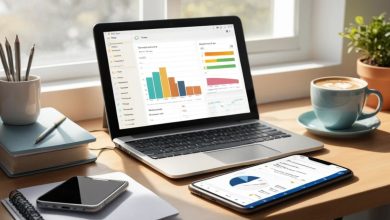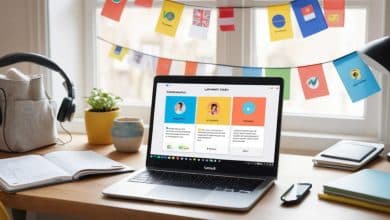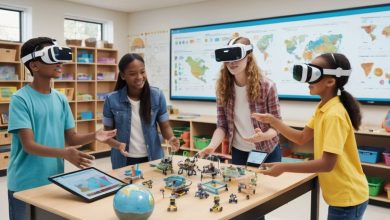Top STEM Educational Resources for K-12 Students
STEM careers are expanding nearly twice as fast as non-STEM jobs, yet many schools still struggle to provide engaging science, technology, engineering, and math lessons. The right tools can close that gap. In this guide, you’ll discover the best STEM educational resources for K-12 learners, see why they work, and learn practical steps for weaving them into any classroom or home-school routine.
Why High-Quality STEM Resources Matter
-
Close skill gaps: Coding, data literacy, and engineering habits of mind are now baseline requirements in many fields.
-
Boost equity: Free and low-cost tools give every student—regardless of ZIP code—access to world-class instruction.
-
Heighten engagement: Gamified challenges, virtual labs, and hands-on kits transform abstract ideas into memorable experiences.
How We Chose the Top Resources
Selection Criteria
-
Curriculum alignment – Matches NGSS, CSTA, and state standards.
-
Grade coverage – Clear pathways for elementary, middle, and high school.
-
Proven impact – Research studies or documented success stories.
-
Accessibility – Free tiers or affordable pricing; minimal hardware barriers.
-
Teacher & parent support – Lesson plans, analytics dashboards, and vibrant communities.
Categories of STEM Resources
| Category | Key Benefits | Ideal Use Cases |
|---|---|---|
| Digital Platforms (Code.org, Khan Academy) | Self-paced courses, automatic grading, progress tracking | Intro to coding, AP prep, flipped classrooms |
| Hands-On Kits & Robotics (KiwiCo, LEGO® Education) | Tactile problem-solving, engineering mindset | Makerspaces, after-school clubs, STEAM days |
| Virtual Labs & Simulations (PhET, Labster) | Safe experimentation, real-time data capture | Chemistry, physics, biology when equipment is scarce |
| Apps & Games (ScratchJr, Tynker) | Gamified logic puzzles, creative storytelling | Early coding literacy, enrichment centers |
| Competitions & Communities (FIRST LEGO League, Science Olympiad) | Collaboration, real-world challenges, mentorship | Project-based learning, gifted programs |
The 12 Best STEM Resources for K-12 Learners
| Grade Band | Resource | Why It Stands Out |
|---|---|---|
| K–2 | ScratchJr | Drag-and-drop coding that links stories with basic logic. |
| K–5 | National Geographic Kids | Science games, quizzes, and printable activities that spark curiosity. |
| K–5 | KiwiCo Crates | Monthly hands-on kits that build engineering skills through play. |
| 6–8 | Code.org | Free Computer Science (CS) curriculum and the famous Hour of Code. |
| 6–8 | PhET Interactive Simulations | Virtual physics and chemistry labs with measure-what-you-see data. |
| 6–8 | Exploratorium Learning Toolbox | Inquiry-based projects from San Francisco’s legendary science museum. |
| 9–12 | Khan Academy STEM | AP-aligned math and science courses with mastery tracking. |
| 9–12 | Labster | Immersive 3-D virtual labs that mimic professional research environments. |
| 9–12 | Coursera for High School | University-backed MOOCs covering everything from genetics to robotics. |
| All Grades | SplashLearn STEM | Adaptive math games tuned to each learner’s pace. |
| All Grades | Discovery Education STEM Connect | Digital “Techbooks” with project-based units and real-world problems. |
| All Grades | TeachEngineering Digital Library | Thousands of NGSS-tagged lessons and design challenges. |
Comparison Table
| Platform / Kit | Free Tier | Paid Tier | Core Subjects | Device Needed | Teacher Dashboard |
|---|---|---|---|---|---|
| ScratchJr | ✔ | – | Coding basics | Tablet | – |
| Code.org | ✔ | – | CS, robotics | Any | ✔ |
| KiwiCo | – | From $23/mo | Engineering | Kit only | Parent guide |
| PhET | ✔ | – | Physics, chem | PC / tablet | – |
| Labster | Demo | School license | Biology, chem | VR-ready PC | ✔ |
| Discovery Ed | – | District license | Full STEM | Any | ✔ |
Case Studies: STEM Success in Action
Rural Middle School Boosts Math Scores
A Title I school adopted SplashLearn and PhET. After one semester, average state-test math scores climbed 14 percentage points, and homework completion rates jumped from 63 % to 87 %.
Girls’ Robotics Club Wins State Championship
Using Code.org’s CS Discoveries course and LEGO® SPIKE Prime kits, a first-year all-girls team captured the state robotics title, citing strong problem-solving skills and confidence as key factors.
AP Chemistry Pass Rate Jumps 22 %
A suburban high school introduced Labster virtual pre-labs. Students arrived in class familiar with procedures, cutting wet-lab errors in half and raising the AP Chemistry pass rate from 68 % to 90 %.
Step-by-Step Tutorial: Integrating STEM Tools into Lessons
-
Pinpoint learning goals
-
Map state standards or NGSS performance expectations to specific topics.
-
-
Select complementary resources
-
Example: Use Khan Academy for theory, PhET for simulations, and KiwiCo for hands-on reinforcement.
-
-
Pilot for four weeks
-
Track student engagement and formative assessments to gauge fit.
-
-
Leverage analytics
-
Review built-in dashboards for time-on-task, quiz accuracy, and mastery gaps.
-
-
Iterate and scale
-
Keep high-impact tools, replace low-yield ones, and expand to additional classes or grade levels.
-
FAQs
Which STEM resources are completely free?
ScratchJr, Code.org, PhET, TeachEngineering, and many Khan Academy courses require zero payment.
How can schools fund paid kits or licenses?
Seek PTA mini-grants, DonorsChoose campaigns, or corporate STEM sponsorships. Many vendors offer bulk-purchase discounts for districts.
Can virtual labs replace physical labs entirely?
Virtual labs reinforce theory and reduce consumables costs, but tactile experiments remain crucial for advanced chemistry and engineering courses.
What devices are required?
Most platforms run in a modern browser. VR-centric tools like Labster perform best on higher-end PCs, while early coding apps such as ScratchJr thrive on tablets.
How do I measure impact quickly?
Use pre-/post-tests, project rubrics, and student surveys. Look for improvements in conceptual understanding, not just completion rates.
Conclusion
High-quality STEM resources ignite curiosity, build future-ready skills, and close opportunity gaps. Start small—perhaps a free Code.org module paired with one hands-on KiwiCo crate—and watch engagement soar. Track results, refine your toolkit, and empower every student to transform from passive consumer to inventive problem-solver. In the rapidly evolving world of STEM, the right resource today can launch tomorrow’s breakthrough.
Published on: 4 de June de 2025








